About fullbore shooting
Fullbore shooting is much like smallbore, although everything is a little bigger.
Equipment
The equipment shown below is typical.
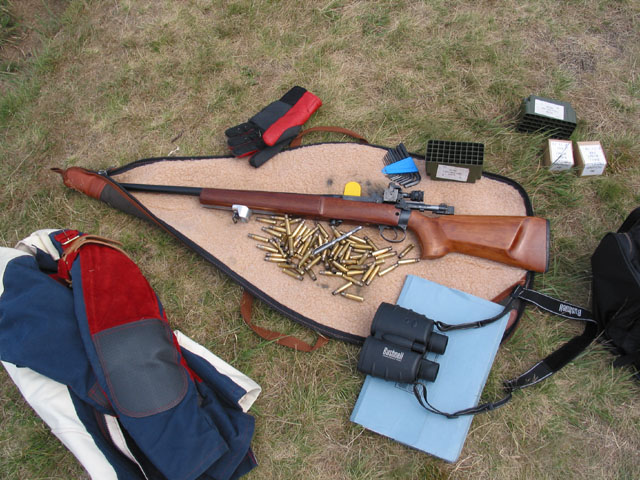
Binoculars or a spotting scope are vital: you might see the scoring panel unaided but the spotting disc is all but invisible. The jacket, sling, and glove are identical to those used in smallbore shooting. The rifle is similar too, although it's chambered for .308" cartridges. A shooting mat (not shown) is a necessity on anything but a perfect day. The club can provide all this equipment upon request.
The larger cartridge allows the use of more powder and heavier bullets, giving the rifle a much longer effective range. Compare the .308" on the left to the .22" on the right below. The higher momentum of the bullets does result in greater recoil than smallbore shooting.
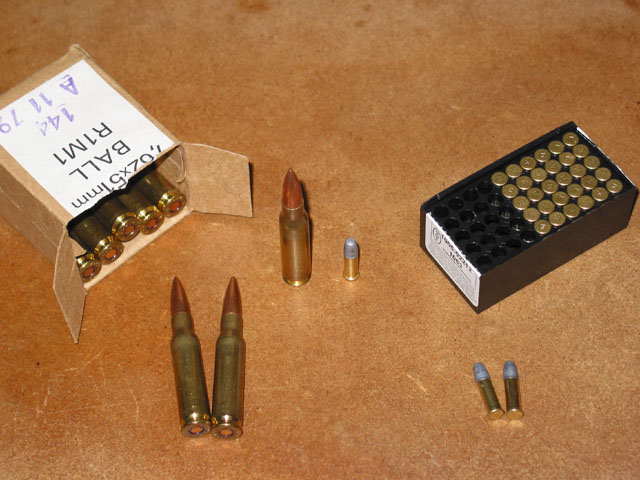
Shooting at Bisley
This is a 300yd shoot on the Century range.
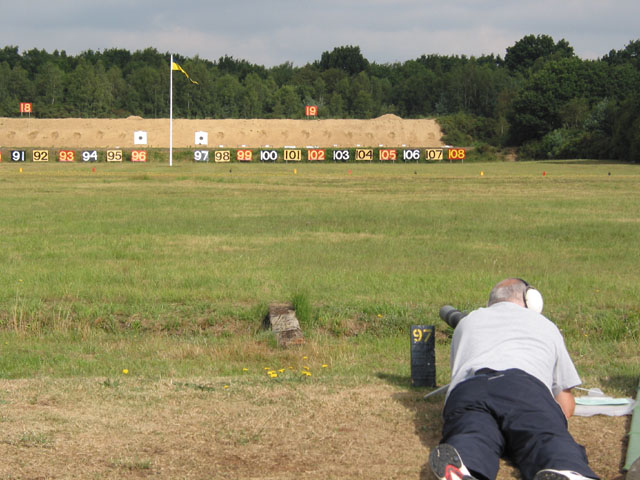
Another view of Bisley's Century range, this time from the 600yd firing line.
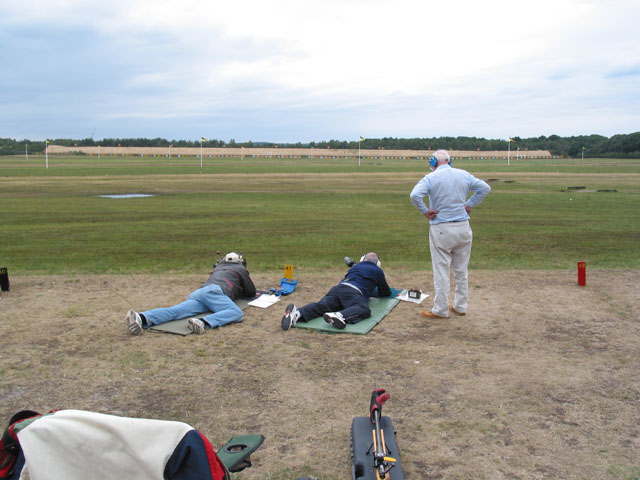
Procedure
A typical smallbore detail will comprise a few sighting shots then ten scoring shots fired as a group before being scored. Fullbore works slightly differently: after each shot the marker will lower the target, mark the point of impact and score, then raise the target for the next shot.
The shooting position is much the same as with smallbore. Note the light blue target sheet just to the shooter's right - this is used to keep track of where previous shots went.

A shooter lines up on his target. Each firing point can accomodate at least two, so we usually set up in pairs and alternate shots to speed things up.
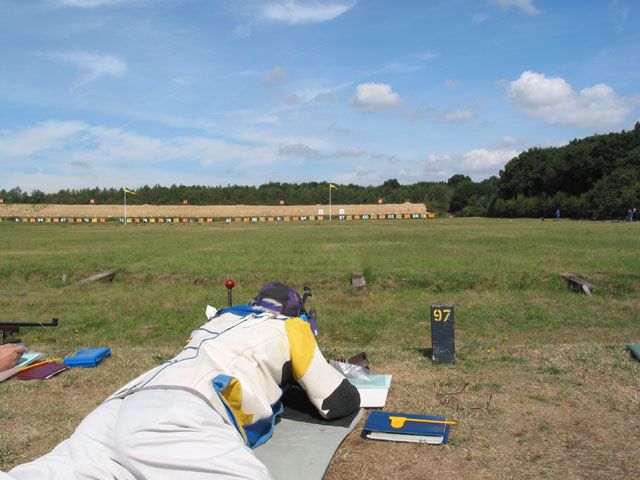
Marking
Someone has to stay at the target, ready to mark our shots. While we can (and occasionally do) hire markers from Bisley it adds about 70% to the cost of the range hire, so we usually take turns marking ourselves. If you come to a shoot advertised as "no marker" expect to have to spend 30-45 minutes marking.